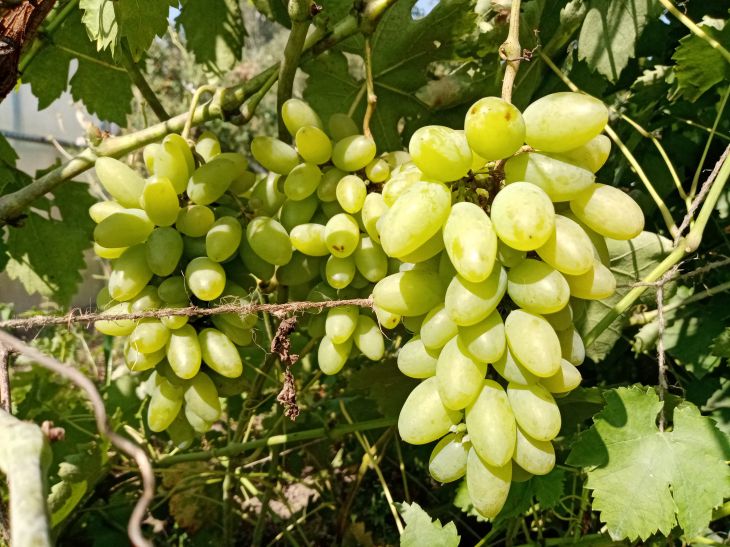What and how many times to feed grapes in spring: the key to a rich harvest
In spring, grapes need complex feeding, which is carried out annually and repeated in the fall.
This necessity is due to the fact that grapes deplete the soil, which without additional nutrition will not allow the plant to bear fruit and develop normally.
What fertilizers do grapes need?
Phosphorus, potassium and nitrogen, which are responsible for the development of shoots, leaf growth and fruiting. Spring feeding should take into account the balance of substances and is carried out three times.
The first addition is made after the buds have swollen.
The second one after the beginnings of flower clusters appear (10-15 days before flowering begins).

The third portion is added when the brushes appear and the berries are the size of a pea.
What to feed
1. The first is root feeding with a solution of 2 tablespoons of superphosphate, 1 tablespoon of ammonium nitrate and 1 tablespoon of potassium sulfate. Superphosphate is dissolved in 1 liter of hot water, then ammonium nitrate is added, and after all the components have dissolved, potassium sulfate is added. The components are dissolved in 10 liters of water. Consumption is per bush.
From organics, you can dissolve 1 liter of dry chicken manure in a liter of boiling water, then pour 10 liters of water and, covering, leave for 3 days. The concentrate is diluted in 10 liters of water and 10 liters of the finished solution are added under the bush.
2. The second feeding is also root feeding. Ammonium nitrate, potassium magnesium sulfate and boric acid are used. 1 teaspoon of boric acid is dissolved in a liter of hot water, after complete dissolution add 1 tablespoon of ammonium nitrate, and then 1 tablespoon of potassium magnesium sulfate. After mixing everything, dissolve in 10 liters of water - consumption per bush.
You can also use this solution for foliar feeding by dissolving the concentrate in 20 liters of water.
3. Monopotassium phosphate is used for root feeding – 1 tbsp. per 10 liters of water. Consumption per bush. Nitrogen is no longer used during this period.
